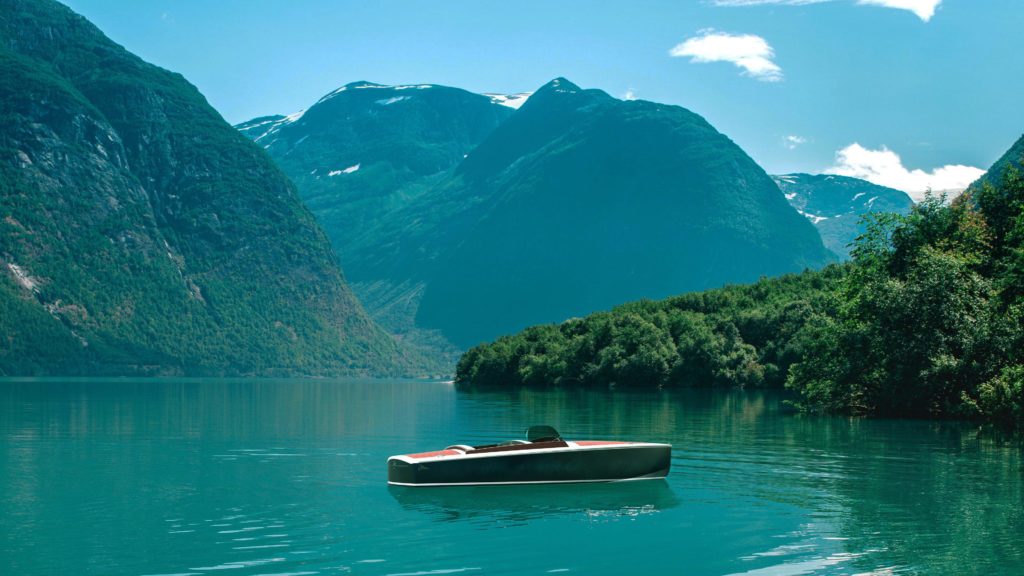
So, what did you accomplish during the Covid-19 lockdowns last year? While most of us were making sourdough bread and exhausting our Netflix accounts, some of us—namely the team at Thain (thainelectric.com)—were creating innovative new designs that pushed the limits of electric boat technology.
As the coronavirus spread throughout the country, “We had to shut down as a non-essential business,” recalled Rob Smith, CEO of the Everett, Washington-based Thain, which was launched in 2005. “But during the downtime, I began thinking about a design I was working on over the last 20 years.” The basic idea was to build a classic runabout that was fast and maneuverable. However, after pondering some history of early runabouts, Smith began to think about electricity as the main source of power rather than internal combustion.
“The early century runabout designs were made to be low-powered with heavy engines,” Smith said. The criticism about electric power centered around the heavy rechargeable batteries required as a source of power. So, why not replace the weight of those bulky engines with a light electric motor and the necessary weight of its batteries? From that point on, Smith decided that his idea was best suited for an electric boat. “Without the pandemic, we probably wouldn’t have done it,” he added.
After Smith officially created the Thain Electric Boat Co., the Thain team, helmed by lead designer Andrew Ashmead and project director Albert VanRooyen, spent most of 2020 working on a prototype called the 16e. The boat’s water-cooled, 45-horsepower motor, with a three-blade bronze propeller, can run for about an hour and a half on a single charge, giving it a range of roughly 60 miles. The 16’ craft with a beam of 4’8”, seats four people and cruises at 13 knots, with a top speed of about 22 knots. Being relatively small in size, there is limited storage capacity under the dashboard, but space remains similar to that of conventional runabout models.
Best of all, the low-maintenance electric motor is whisper quiet and produces no exhaust fumes, yet still provides jack-rabbit acceleration and agile performance. “The design serves the weight of the batteries and motor well, where efficiency is a part of the package as opposed to outright performance,” Smith said. “The modern materials available for the substrate all play a part in its efficiency.”
Late last month, the 16e made its debut at the Anacortes Boat & Yacht Spring Sale, turning heads with its clean lines. The final prototype of the 16e is simplicity itself. Even when it’s moored at the dock, the sleek runabout looks like it’s already in motion, with aerodynamic curves created with computer graphic precision.
The engineers worked hard to shave as much weight as possible last year on the 16e, using a cored hull to reduce internal framing and increase buoyancy, resulting in a prototype weighing between 600 and 700 pounds. But Smith argued that the boat’s powerplant makes the crucial difference. “It is hard to be lighter than cedar, but the design, along with the strength of the substrates used, make the boat perfect for electric propulsion,” he said.
Another key difference between the 16e and other similarly sized runabouts is the cost: An MSRP of just $49,500 makes the 16e one of the most affordable e-boats of its size on the market. “The price point makes it very competitive,” said Steve Dittoe, vice president of sales and marketing for Thain Electric Boat and owner of Everett Yacht Sales (everettyachts.com), the exclusive distributor of the 16e. The model is also expected to be an attractive option for those who want to launch in areas where internal combustion engines are prohibited.
Smith described the 16e as a “bread-and-butter boat on the water that is fun, quick, and easy to operate.” The model, he added, will also require no more “fine-tuning” in the design and is ready to be mass-produced. “We are coming to the market with a product priced for the market. You can afford one if you can afford a 16-foot runabout, and it’ll perform comparably.”
While the 16e is the first electric boat Smith has produced, he is no stranger to environmental stewardship. Originally from South Africa, Smith is also CEO of EarthWise Ventures (earthwiseventures.com), which is focused on providing efficient, dependable marine transportation in some of most impoverished regions of the world. Thain has already produced two lightweight, 200-passenger catamaran ferries—the M/V Amani and M/V Bluebird—which operate from Uganda and Tanzania on Lake Victoria, the largest lake in Africa. Thain and EarthWise are also partnering to build other high-speed ferries for use in the ocean waters off the coasts of Ghana, Togo, and Nigeria. One futuristic model currently in the design stages at Thain is the “LightSpeed-class” trimaran ferry that one day may carry 149 passengers at a sustained speed of 42 knots.
In these early stages of the 16e’s production, Thain has not yet settled on the type of batteries that will be used in the mass-produced version, but Smith said they will likely by similar to the Ni-Cd rechargeables commonly used in Tesla automobiles. “Battery technology is changing so fast that new models will likely have the latest batteries in them,” he said.
If all goes well, Dittoe said he expects Thain can ramp up 16e production to about four new 16e boats per month by mid-summer. Other future plans include a 20’ version of the electric boat later this year, as well as options to include teak or mahogany decking materials.
While no one wants another pandemic to be the spark for the next generation of low-carbon-footprint boat design, Smith said he’s excited for the potential of the rapidly expanding e-boat market. “The future is electric boats,” he said. “And we’re coming up with a boat that can be afforded by the market. We want to roll out a boat for everybody, right from day one.”